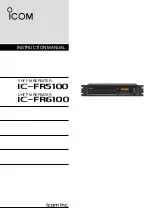
36
STR-JZ I&O Manual
IM090831
RD: AUG 2009
RL: 09A- BA
20 SEQUENCE OF OPERATION
The S87 ignition control module is powered by a 24v transformer and activated when the ther-
mostat calls for heat. On every call for heat the S87J will delay start-up to provide a 30 second
system pre-purge. When the S87 is activated by a thermostat or call for heat an internal trans-
former provides power to the electronic generator circuit for Spark Ignition and the safety lock-
out timing begins. At the same time, the S87 opens the gas controls main valve allowing gas
to flow to the main Burner.
The S87 Control Module performs the following basic functions:
· Provides a 30 second system pre-purge
· Supplies power to the electronic pulse-generator circuit for the Spark Igniter (30,000 volts
open circuit).
· Allows 21 seconds for Ignition trial (TFI) before system safety lockout occurs.
· Senses the Burner flame for safe lighting
· Shuts off the spark after the Burner is lit.
Burner with direct spark ignition, sequence is as follows :
1a.
Line Voltage Thermostat:
Upon a call for heat by the line voltage Thermostat or “ON/
OFF” switch, the Blower and the 120/24 volt Transformer are powered simultaneously with
115 volts.
1b.
24 Volt Thermostat:
The
120 volt supply to heater will power the 120v/24v Transformer
and the 120V side of the Blower switching relay simultaneously. A call for heat by the 24
volt Thermostat energizes the 24 volt control circuit and the 24v/120 volt relay powering the
Blower.
2. The 24 volt control circuit powers the DSI control in series through the normally open Air
Pressure Switch (APS) and the normally closed Blocked Flue Switch (BFS).
3. The Blower creates a positive pressure and closes a normally open contact inside the Air
Proving Switch (APS).
4. 24 volts supplied to the DSI control initiates the 30 second pre-purge cycle.
5. After completing the 30 second pre-purge cycle the DSI control generates high voltage to
the Spark Igniter, and 24 volts to energize the Gas Valve.
6. The Burner will light and establish a steady flame.
7. Once the flame sensor determines there is a steady flame established, with a minimum
flame signal of 1.5 µA the spark igniter is then de-energized.
8. In the event ignition does not occur, the safety circuit will function to interrupt gas flow after
approximately 21 seconds and lock the system out. No further gas will flow until the power
has been manually interrupted for a period of 30 seconds. This will reset the ignition mod-
ule and the operating sequence will restart at step #1
9. If the blower does not run, the blower air pressure switch (normally open contact) does not
close and power is not supplied to the ignition control.
















































